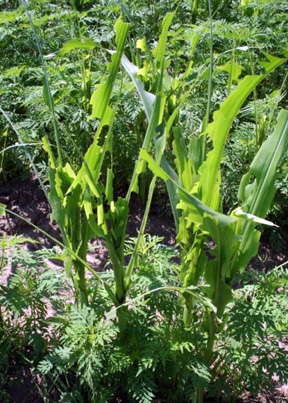March of the Armyworms Part I: Wheat
Editor’s note: This article is from the archives of the MSU Crop Advisory Team Alerts. Check the label of any pesticide referenced to ensure your use is included.
True armyworm is a common insect pest of wheat, as well as corn, other crops and turf. True armyworms can differ a great deal in color, depending on their size and what they are eating.
Armyworm does NOT over-winter in Michigan. Moths colonize the state from the south each season, so infestations vary from year-to-year and field-to-field. Moths are attracted to areas of dense grassy vegetation for egg laying. This includes ditch banks, weedy areas in crop fields, grass hay and WHEAT and other small grains.
Read article as a printable factsheet.
Signs of infestation
Larvae feed on leaf tissue and may even clip leaves off the stem. In severe cases, all leaf material is eaten, including the flag leaf. Large cylindrical frass (excrement) pellets on the ground are another sign that larvae are present. During the day, the larvae themselves usually hide at the base of the plant, unless it is cloudy.
Because populations vary so much from year-to-year, and among fields, scouting for armyworm is cost effective to find and target fields over threshold. Larvae often hide on sunny days, and crawl up on the plants to feed in the evening or on cloudy days. Thus scouting involves shaking plants and examining the ground carefully to find and count larvae.
Scouting is also used to catch larvae when they are small. The younger the larva, the easier it is to kill. This means a higher percentage of control, and/or the use of a lower rate of insecticide, saving money. Furthermore, larger larvae eat more and are often responsible for the majority of damage, especially head clipping. This accounts for fields that are seemingly defoliated or clipped overnight.
Tips when treating
- Protect the flag leaf from defoliation. But if the flag leaf is gone, it may still be worth treating if the stem is still green and partially takes over for the flag leaf.
- If possible, spray later in the day. Larvae will crawl across the freshly treated surface that evening as they climb plants to feed.
- In a thick wheat field, coverage may be difficult. Aerial application sometimes fails to drive product down into the canopy, whereas a ground rig may have better luck. However, better coverage is balanced by yield loss from wheel tracks in the field.
- Know your Pre-Harvest Intervals. For example, PHIs range from seven days for Lannate, to 14 days for Mustang, to 21 for Sevin, to 28-30 days for Baythroid, Proaxis and Warrior.
- Know your crop. While there are many insecticides registered for wheat, many of these same products CANNOT be used on barley, oats or rye.
- If armyworms are marching out of a wheat field towards another field, a barrier treatment is a cost effective way to stop the movement.
When not to treat
If larvae are already large (plus-1.5 inches), they are ready to pupate and will stop feeding shortly. Spraying probably will not pay at this point.



 Print
Print Email
Email






